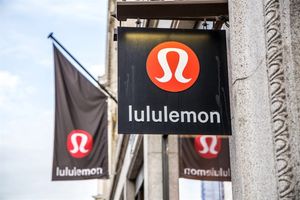As digital services expand, ensuring that users are who they claim to be—and that they meet legal age requirements—has become essential. Whether your business operates in gaming, e-commerce, financial services, or social media, access to age-restricted products and content must be limited to eligible users only. That’s where age verification comes in.
An age verification system enables organizations to confirm users’ ages during onboarding, registration, or purchase processes. Beyond meeting legal obligations, it helps protect minors, build user trust, and safeguard corporate reputation.
In this article, we’ll look at how age verification technology works, why it’s essential for businesses, what global regulations mandate it, and which industries rely on age verification solutions to remain compliant and responsible.
How Does Age Verification Work?
Age verification is the process of confirming that a person meets a minimum age threshold before accessing a product, service, or piece of content. It’s typically part of a broader identity verification workflow where users must prove both their identity and age.
Modern digital age verification combines document checks, biometric analysis, and data validation to confirm users’ ages quickly and securely. The process can be fully automated or include manual review for higher-risk transactions.
Here’s what a typical age verification system looks like:
1. Identity Document Capture
The user uploads or scans a government-issued ID such as a passport, driver’s license, or national identity card. This step provides verifiable information directly from an official source.
2. Document Authentication
The age verification software then authenticates the document using advanced forensic algorithms. It checks for visual and digital security features—like holograms, microprinting, fonts, MRZ codes, and barcodes—to ensure the ID is genuine.
3. Data Extraction
Using Optical Character Recognition (OCR), the system extracts key details, including the date of birth and document number, directly from the ID image. This guarantees accuracy and eliminates manual entry errors.
4. Liveness and Biometric Verification
To ensure that the document holder is its legitimate owner, biometric age verification is applied. A liveness check confirms that a real, live person is present, while facial recognition matches the selfie to the photo on the ID.
5. Cross-Referencing and Decision
The system can cross-check the extracted data against government or industry databases to confirm validity. If the user meets the required age criteria, the verification is approved automatically.
6. Instant Response
Thanks to modern age verification technology, the entire process—from capture to confirmation—can take only a few seconds. The result: a secure, compliant, and frictionless user experience.
Why Businesses Need Age Verification
Implementing an age verification system is no longer optional—it’s a legal, ethical, and strategic necessity. Here’s why businesses across industries are investing in age verification solutions.
1. Ensuring Regulatory Compliance
Global regulators are increasingly enforcing age restrictions across online platforms. Businesses that fail to verify user ages face severe penalties, including fines, license revocation, or full platform bans.
Key regulations include:
- UK Online Safety Act – mandates strict age checks for sites hosting adult or harmful content.
- US COPPA (Children’s Online Privacy Protection Act) – requires verified parental consent for users under 13.
- EU Digital Services Act (DSA) – restricts targeting minors with ads and mandates content protection.
By implementing digital age verification, organizations can comply with these laws while maintaining user-friendly experiences.
2. Preventing Identity Theft and Fraud
Fraudulent sign-ups and stolen IDs are a growing concern. Age verification software helps detect fake or manipulated documents and prevents impersonation attempts.
Integrating biometric tools like face liveness detection ensures that the individual presenting the document is physically present, reducing the risk of identity theft and synthetic profiles.
3. Protecting Minors
Ethical responsibility is at the heart of age verification. It prevents minors from accessing restricted content such as gambling, adult entertainment, or age-limited products like alcohol and tobacco.
In sectors like gaming or social media, biometric age verification can even help enable parental controls and age-based access levels, creating safer online spaces for young audiences.
4. Safeguarding Corporate Reputation
Failing to restrict access to age-restricted content can severely damage a brand’s credibility. Public trust and corporate responsibility go hand in hand—especially when user safety is at stake.
By adopting robust age verification solutions, companies demonstrate accountability and compliance, reinforcing customer confidence and regulatory trust.
5. Minimizing Legal and Financial Risks
Non-compliance can lead to lawsuits, fines, or revoked licenses. Automated age verification systems offer audit trails that prove compliance, helping businesses demonstrate due diligence.
In sectors such as gaming or alcohol retail, maintaining logs of verification attempts is a legal requirement—something that modern age verification software can perform automatically.
6. Enhancing User Experience
Far from being an obstacle, digital age verification streamlines onboarding. Automated document capture and AI-driven biometric checks verify users in seconds, creating a secure yet smooth customer experience.
This balance between protection and convenience improves retention and satisfaction, allowing businesses to meet regulatory obligations without alienating users.
Age Verification Regulations Around the World
Age verification requirements vary by region, but the core objective remains universal: protecting minors and enforcing responsible access. Here’s a look at how major markets handle age verification compliance.
United States
The Children’s Online Privacy Protection Act (COPPA) regulates how digital services interact with children under 13. Companies must obtain verifiable parental consent before collecting data from minors.
In addition, several states—including Louisiana, Utah, and Texas—now require digital age verification for adult websites, mandating ID or biometric checks before entry.
United Kingdom
The UK leads in enforcing age verification technology. Under the Online Safety Act, websites hosting harmful or adult content must verify users’ ages using secure and reliable methods.
The UK Gambling Commission also mandates that online betting platforms confirm users’ ages before any deposits or bets are placed, ensuring accountability in the gaming sector.
European Union
Both the GDPR and Digital Services Act (DSA) emphasize protecting minors’ data and ensuring safe access. Depending on the member state, the age of consent for online data processing ranges from 13 to 16.
Platforms handling sensitive content, e-commerce, or financial transactions must adopt age verification systems that meet both privacy and security standards.
Canada
Age verification rules vary by province. For example, online cannabis retailers and alcohol vendors must confirm that users are at least 18 or 19 years old (depending on jurisdiction) through age verification software before processing orders.
Asia-Pacific
Countries like Japan, South Korea, and Australia are advancing biometric age verification to improve digital safety.
- In South Korea, both real-name and age checks are required for online gaming and gambling.
- In Australia, adult-content platforms must implement digital age verification or face penalties under federal law.
Industries That Require Age Verification
Age verification solutions are critical in any industry dealing with age-restricted goods, services, or content. Below are the sectors where compliance is not optional—it’s mandatory.
1. E-commerce and Retail
Online stores selling alcohol, tobacco, vapes, or other restricted goods must verify customer ages before checkout. An integrated age verification system ensures compliance and protects merchants from liability.
2. Online Gaming and Gambling
These industries are heavily regulated. Operators must prevent underage participation by verifying both identity and age. Digital age verification with biometric checks has become the gold standard for compliance and licensing.
3. Social Media and Online Communities
With increasing scrutiny over child safety, social platforms are adopting age verification technology to enforce content restrictions, enable parental controls, and comply with youth protection regulations.
4. Streaming and Entertainment Platforms
Streaming services that offer mature or explicit content must ensure viewers meet age requirements. Biometric age verification delivers quick, secure access while keeping minors protected.
5. Fintech and Cryptocurrency Platforms
Financial services—including fintech apps and crypto exchanges—must verify users’ identities and ages under KYC(Know Your Customer) and AML (Anti-Money Laundering) rules. Age verification systems help ensure only adults can open or manage accounts.
6. Adult Content and Dating Platforms
These industries face some of the strictest legal standards. In many jurisdictions, age checks are mandatory before granting access. Reliable age verification software helps such platforms maintain compliance and avoid penalties.
7. Hospitality and Delivery Services
Businesses delivering or serving alcohol must confirm the recipient’s age both online and at the point of delivery. Integrating age verification software into logistics systems helps ensure seamless, compliant transactions.
The Future of Age Verification Technology
As fraudsters evolve and regulations tighten, age verification technology continues to advance. The next generation of solutions will focus on stronger security, faster verification, and enhanced privacy.
Emerging trends include:
- Biometric age estimation: AI models capable of estimating age from facial analysis, reducing reliance on physical IDs.
- On-device verification: Processing data locally to improve privacy and compliance with GDPR.
- Blockchain-based digital IDs: Giving users control over their credentials and the data they share.
- Multimodal verification: Combining biometric, document, and behavioral data for unparalleled accuracy.
By adopting cutting-edge age verification software, businesses can future-proof compliance, improve safety, and enhance user trust.
Conclusion
In today’s digital landscape, age verification is more than just a legal requirement—it’s a pillar of responsible business. It protects minors, prevents identity fraud, and maintains brand integrity across industries that manage age-restricted content or products.
Whether your organization operates in gaming, e-commerce, entertainment, or fintech, implementing a robust age verification system is a proactive step toward compliance and user protection.
With Regula’s advanced age verification solutions, powered by document authentication, biometrics, and AI-driven analysis, businesses can verify users swiftly and securely—ensuring every transaction and interaction meets the highest standards of safety and trust.





